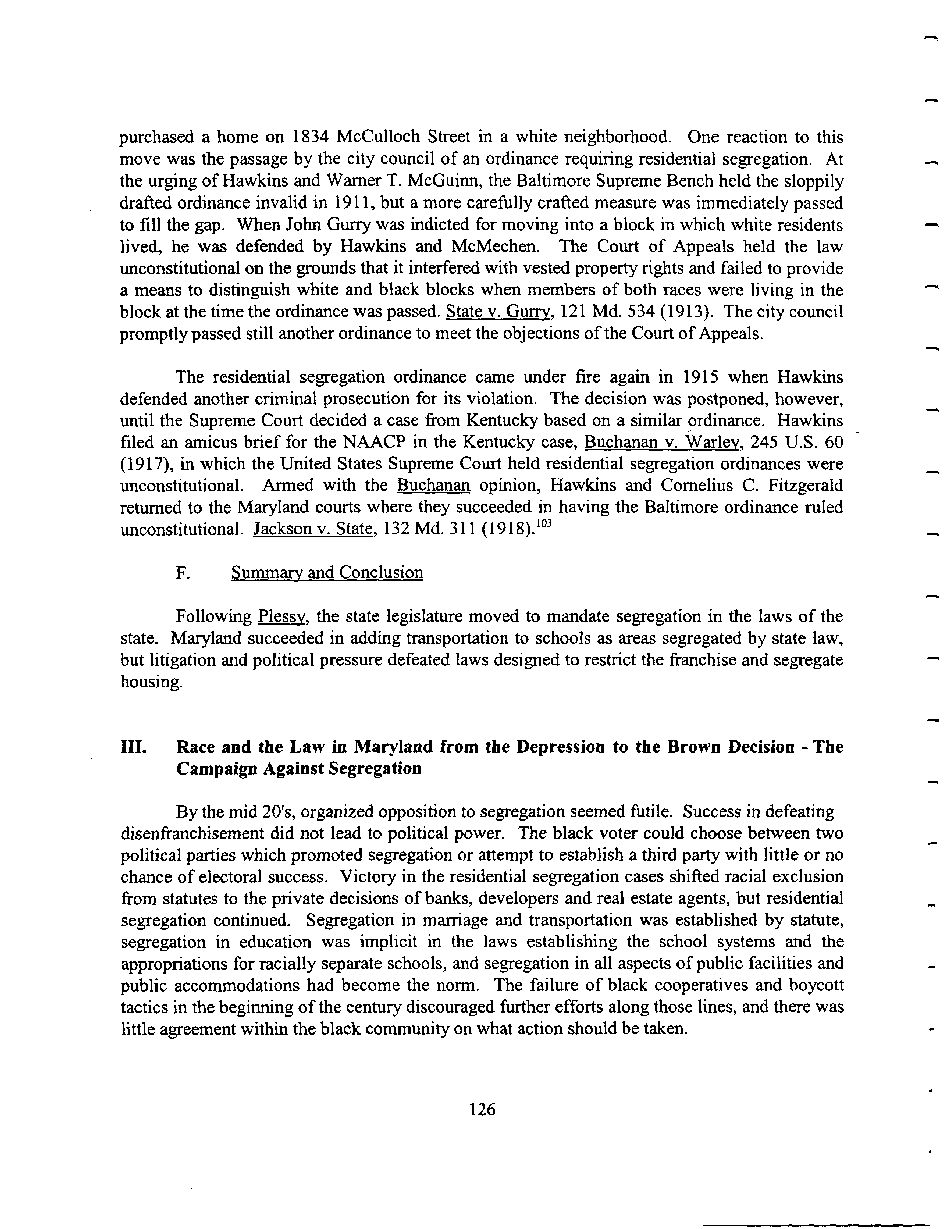|
purchased a home on 1834 McCulloch Street in a white neighborhood. One reaction to this
move was the passage by the city council of an ordinance requiring residential segregation. At
the urging of Hawkins and Warner T. McGuinn, the Baltimore Supreme Bench held the sloppily
drafted ordinance invalid in 1911, but a more carefully crafted measure was immediately passed
to fill the gap. When John Gurry was indicted for moving into a block in which white residents
lived, he was defended by Hawkins and McMechen. The Court of Appeals held the law
unconstitutional on the grounds that it interfered with vested property rights and failed to provide
a means to distinguish white and black blocks when members of both races were living in the
block at the time the ordinance was passed. State v. Gurry, 121 Md. 534 (1913). The city council
promptly passed still another ordinance to meet the objections of the Court of Appeals.
The residential segregation ordinance came under fire again in 1915 when Hawkins
defended another criminal prosecution for its violation. The decision was postponed, however,
until the Supreme Court decided a case from Kentucky based on a similar ordinance. Hawkins
filed an amicus brief for the NAACP in the Kentucky case, Buchanan v. Warlev. 245 U.S. 60
(1917), in which the United States Supreme Court held residential segregation ordinances were
unconstitutional. Armed with the Buchanan opinion, Hawkins and Cornelius C. Fitzgerald
returned to the Maryland courts where they succeeded in having the Baltimore ordinance ruled
unconstitutional. Jackson v. State, 132 Md. 311 (1918).103
F. Summary and Conclusion
Following Plessy, the state legislature moved to mandate segregation in the laws of the
state. Maryland succeeded in adding transportation to schools as areas segregated by state law,
but litigation and political pressure defeated laws designed to restrict the franchise and segregate
housing.
III. Race and the Law in Maryland from the Depression to the Brown Decision - The
Campaign Against Segregation
By the mid 20's, organized opposition to segregation seemed futile. Success in defeating
disenfranchisement did not lead to political power. The black voter could choose between two
political parties which promoted segregation or attempt to establish a third party with little or no
chance of electoral success. Victory in the residential segregation cases shifted racial exclusion
from statutes to the private decisions of banks, developers and real estate agents, but residential
segregation continued. Segregation in marriage and transportation was established by statute,
segregation in education was implicit in the laws establishing the school systems and the
appropriations for racially separate schools, and segregation in all aspects of public facilities and
public accommodations had become the norm. The failure of black cooperatives and boycott
tactics in the beginning of the century discouraged further efforts along those lines, and there was
little agreement within the black community on what action should be taken.
126
�
|

